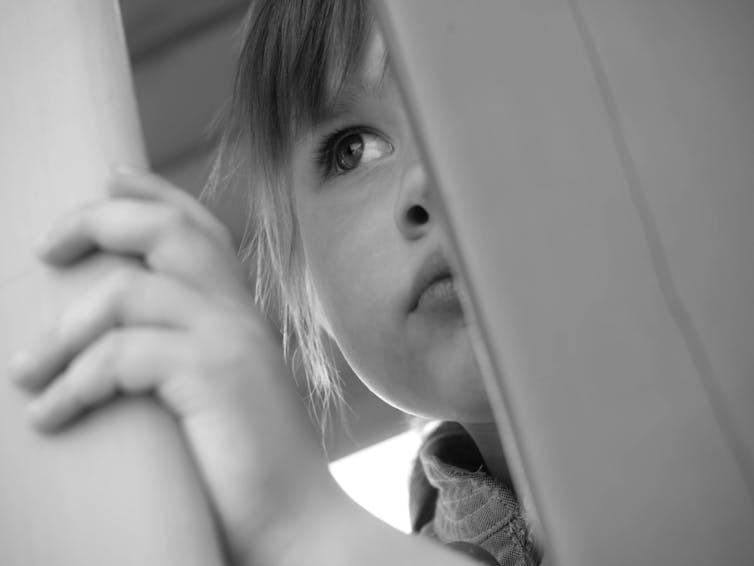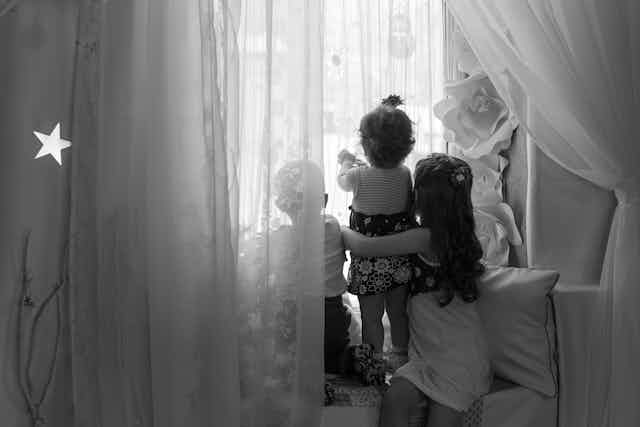Data from the Royal Commission into Institutional Responses to Child Sexual Abuse recently revealed that, between 1950 and 2010, 60% of all abuse allegedly took place at faith-based institutions. Evidence showed that, in Catholic institutions, 95% of alleged offenders were men. This means the remaining 5% (or 96 of the 1,880 accused) were women.
This may come as a surprise. There is a common misconception that all child sex offenders are men. But women child sex offenders do exist, although they differ from male counterparts in several ways.
How many women abuse?
A study for the Home Office in the UK in 1998 indicated less than 5% of child sex offences were committed by women. This is supported by data coming out of the Royal Commission – that 5% of the alleged abusers associated with the Catholic Church were religious sisters – as well as research based on correctional services data in Australia.
The author of the UK report acknowledged the number may be lower than the reality. A 2015 study looked at virtually every substantiated child sexual abuse case reported to child protective services in the United States in 2010. It concluded more than 20% of child sexual abuse cases reviewed involved a primary female perpetrator – so estimates vary significantly.
In 2009, the BBC reported a large rise in the number of children calling the UK charity Childline to report sexual abuse by a female. Between 2005 and 2006, 2,142 children reported they had been sexually victimised by a female.
Why do women abuse?
There are some important points of difference between male and female perpetrators of child sex abuse. Generally speaking, females tend to offend against younger victims and are less discriminant about victim gender.
There are a number of theories as to why women sexually abuse children. Researchers suggest some women abuse their own daughters as a result of narcissistic tendencies. In these cases, an older woman’s need for admiration and exaggerated sense of self importance, for example, leads to jealousy of her daughter.

A significant number of females who sexually abuse children fall into the “teacher/lover group”. This comprises women in their 30s who victimise males with an average age of 12 years. The women may see the relationship as based on love, and may not see it as abusive or recognise its inappropriate nature.
Women in this group can be driven by a need for intimacy and trying to compensate for emotional needs not met elsewhere. This group can include the female teachers who become sexually involved with male pupils. They are invested in the idea of a relationship, find adolescent boys less threatening than men of their own age, and have more control over the relationship.
Another category is one researchers have termed the “predisposed molester”. Women in this group often experience abuse themselves and may have addictive personalities.
A similar category, of the “mother molester”, may comprise a significant proportion of female child sex offenders. Research has routinely indicated that women are 4.5 times more likely to offend against their biological child, as well as other children in their care.
Indirect and co-abuse
There’s another group of women who harm their own children. These are “male-coerced offenders” – passive females in relationships with abusive males who would do just about anything to keep their man happy. They may think co-abuse will actually bring them closer together as a couple.
The “male-accompanied offenders” who are not coerced may sexually abuse their children out of anger or jealousy.
Another group comprises the “criminal homosexual offenders”, who may have an entirely different motivation for their offending histories. Many of the offences include forcing behaviours – such as forcing young girls into prostitution. Here the motivation might be more economic than sexual in nature.
I worked on a case involving a childcare worker who took indecent images of children and distributed them across a paedophile network. During the police interview she expressed no sexual gratification in the acts she photographed.
In my experience, I have never seen a man involved in the sexual abuse of children or paedophile rings who did not express a sexual attraction for children.
But female child sex offenders are a mixed group and while for some, the sexual abuse of children is purely financially driven, other women engage in abuse as well. An example would be the infamous UK case of Marie Black, who was jailed in 2015 for 23 offences including rape, conspiracy to rape, and inciting a child to engage in sexual activity.
Her victims were five young children: two boys and three girls. And her crimes included taking them to sex parties and “raffling them off’” for abuse by others.
A key point of difference between male and female sexual abusers of children is in the power relationship with their victims. Sex crimes perpetrated by men are considered crimes of power over the victim. But while female sex offending can be control-driven, the need for intimacy seems to play a larger role than domination.
Is child sexual abuse by women on the rise?
Estimates indicate somewhere between 90 to 95% of all sexual abuse goes unreported, and the number is probably even higher for female-perpetrated sexual abuse.
The evidence does not necessarily indicate child sexual abuse by women is increasing. But it may indicate that – due to increased media attention – more children feel comfortable to speak out without fear of stigmatisation.
Our current understanding of women who sexually abuse children is founded on very limited research. Therefore, we need to reconstruct our ideas about child sex offenders to include woman as a distinct sub-group, and undertake considerably more research to get a better understanding of the causes behind these offences.

